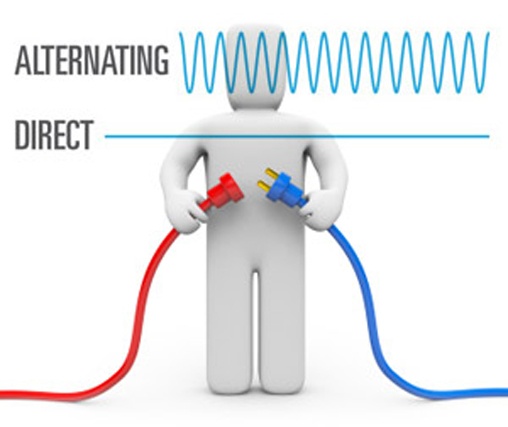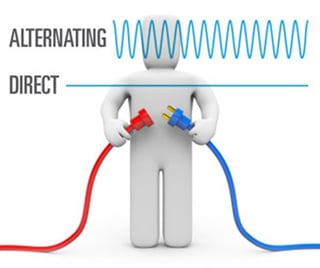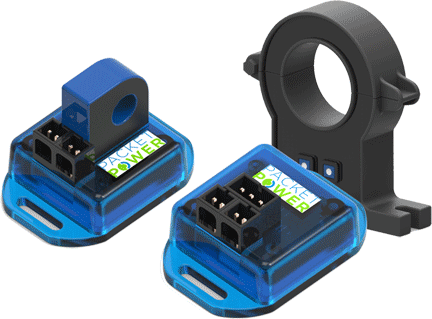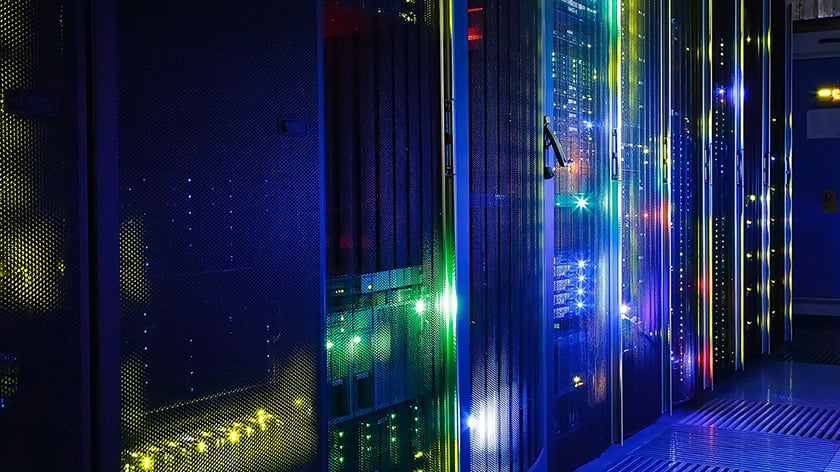Packet Power Unveils First Wireless DC Power Monitors
Packet Power now offers data centers, telcos and cable companies an easy and cost-effective way to capture energy usage on 48V and 380V DC circuits.

Direct Current has been an intermittently hot topic in the Data Center community for over a decade, yet it remains relatively unknown. It is finally beginning to change and many of our customers are starting to consider and actually deploy DC systems. Here's a brief review of the basics of DC vs. AC installations.
DC basics
The name says it all: Direct Current has a constant, single voltage over time and flows in one direction. Alternating Current (AC) changes direction smoothly back and forth following a sine-wave pattern, usually 50 or 60 times a second. By convention, direct current is said to flow from the positive pole to the negative one. In reality, electrons actually move from the negative pole to the positive pole. With the exception of larger electrical motors, lighting and industrial machinery, most electrical devices internally run on DC. All batteries are also DC.

Why mostly AC?
There is one simple reason for why AC ended up dominating power distribution for the first 100 years and, contrary to what you may have read on the Internet :-), it is not Edison, Tesla or the electric chair: it is basic laws of physics.
Because of physics, electricity and magnetism go hand in hand. An electrical current always generates a magnetic field. However, only a changing magnetic field is capable of generating electrical current. The principle of a changing current in one loop of wire inducing current in another loop of wire is what makes transformers possible and is the reason they only work with AC. Transformers are what allow AC power to be converted back and forth between high-voltage/low current (which is great for long distance distribution since lower current allows more power to flow through a thinner cable) to lower voltage/high current (which is safer and easier to use to power things around the house or office).
Transformers are as fundamental to electrical power distribution as gears are to mechanical power trains. If you are a car enthusiast, think of voltage as the RPMs of the engine and current as the torque. Gears allow you to trade one for the other.
Why DC today?
Most computers internally use low voltage (generally 3 to12 Volt) DC power, which is produced from AC power by a built-in power supply (or two in case of dual power systems). Power supplies are not free and they are not 100% efficient. Also, the AC power feeding those power supplies may have undergone multiple conversions through transformers and Uninterruptible Power Supply (UPS) systems before it got to the server. Thus it makes sense to try to reduce the number of potentially inefficient and failure-prone power conversions within the power distribution chain.
The promise of DC-based power distribution is enabling systems with fewer power conversion points, making them simpler and more efficient. DC power is also what batteries provide, which has the benefit of eliminating the need for UPS systems to convert the output of backup batteries to AC. DC systems for data centers tend to operate at either 220 to 240V DC (e.g. in China) or 380V DC (in Europe and the U.S.).
Do you need new hardware?
Not necessarily. It turns out that the input stage of most power supplies of most servers on the market today is a simple rectifier that converts incoming AC into DC. If connected to a DC circuit with similar voltage, it pretty much just works. The catch is that some manufacturers have not anticipated this and have not officially certified their products for DC operation, so they may actually work but you might be violating their warranty terms by using DC power. The good news is most manufacturers are working on changing that.
Do you need new a new power monitoring system?
With Packet Power - no. Most power monitoring systems on the market today support only AC systems. Packet Power provides a complete set of monitoring solutions covering most AC systems as well as 12V DC, 48V DC, 220V DC and 380V DC systems within a single solution. We are the first wireless monitoring system deployed in data centers with dual AC/DC data power distribution infrastructures.
Email info@packetpower.com if you'd like more information or view our DC Monitoring solutions.

Packet Power now offers data centers, telcos and cable companies an easy and cost-effective way to capture energy usage on 48V and 380V DC circuits.

In late 2019, as the global Covid pandemic was about to explode, a Fortune 100 telecommunications company engaged Packet Power to solve a critical...

We are pleased to learn that Volta Data Centres, a London-based co-location services provider, has been nominated for two 2016 DCS awards.